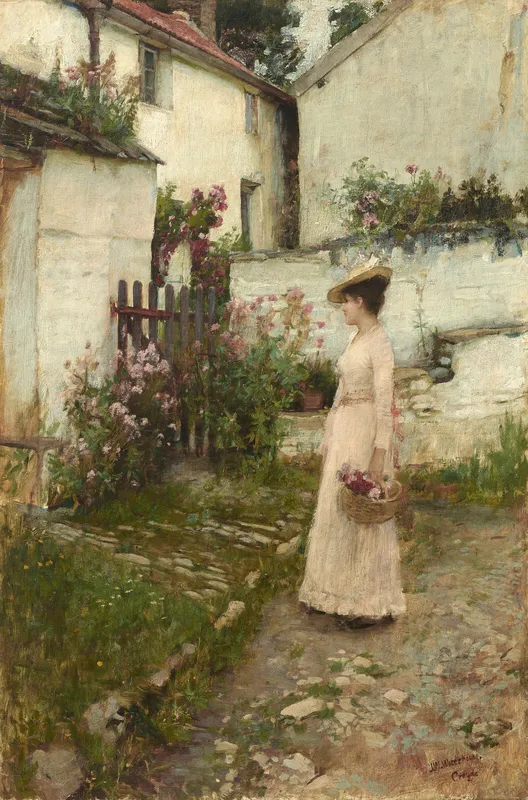
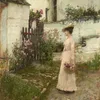
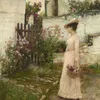
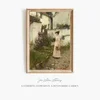
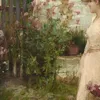
About the Artist
Master’s Palette
Reveal the unique color story behind each piece, helping you delve into the artistic essence, and spark boundless inspiration and imagination.
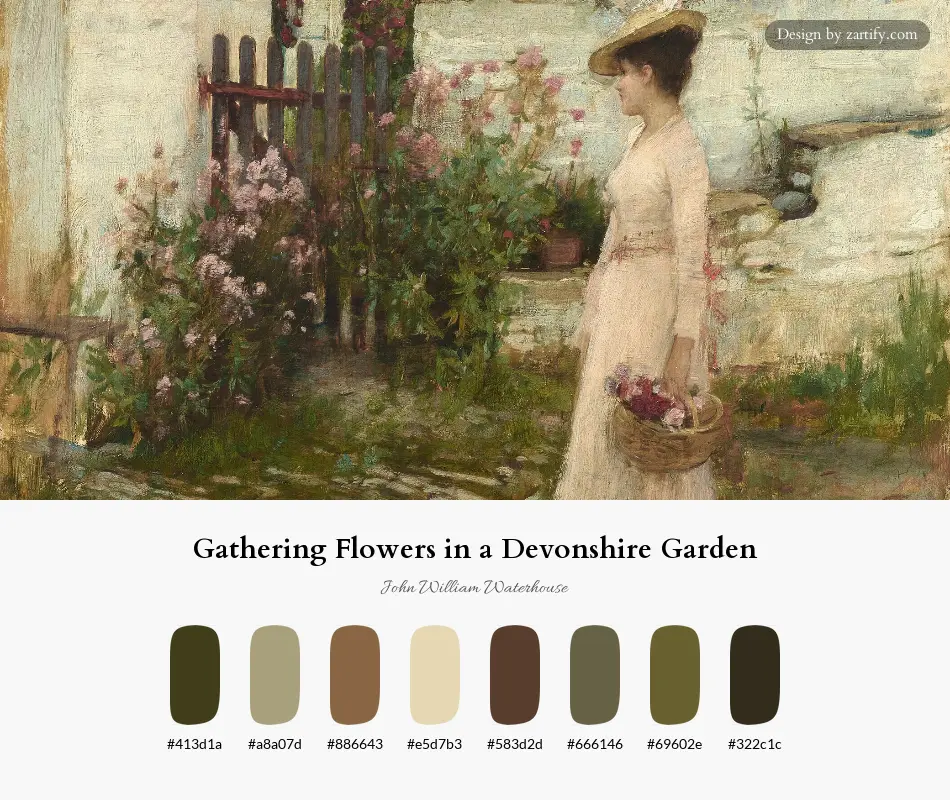
Bring the captivating colors to your project. Click to copy!
Artwork Story
John William Waterhouse’s Gathering Flowers in a Devonshire Garden is one of those paintings that sneaks up on you—not with drama, but with the quiet insistence of a half-remembered afternoon. The scene is simple enough: women in flowing dresses bending among the blooms, their hands brushing petals with a kind of distracted reverence. But Waterhouse, being Waterhouse, makes it feel like the garden itself is holding its breath. The flowers aren’t just picked; they’re being chosen, as if each stem carries some unspoken weight. You almost expect one of the figures to pause, her fingers hovering over a particular blossom, caught in a thought she can’t quite name.
The Devonshire setting isn’t just backdrop; it’s a character. Waterhouse had a knack for turning landscapes into moods, and here the garden feels both lush and slightly overgrown, like nature is just barely keeping its secrets contained. There’s a tension in the way the light filters through—soft but insistent, the kind that makes you squint even in a painting. Compared to his more mythologically charged works, this one feels grounded, almost casual, though of course with Waterhouse, nothing’s ever really casual. The women’s postures are too deliberate for that, their gestures too full of unspoken rhythm.
You could imagine this piece in a sunlit corner of some grand, slightly faded country house, the kind where the wallpaper has started to peel at the edges but no one minds. It wouldn’t belong in a stark modern space—it needs the whisper of old wood and the faint smell of beeswax to feel at home. The painting doesn’t demand attention; it rewards it, the way a real garden does when you stop rushing past. And like any good Waterhouse, it leaves you wondering what happens just after the frame ends—whether the flowers ever make it inside, or if they’re left to wilt in the grass, forgotten by the next brushstroke.


 (c. 1380-1390)-full.webp)
-full.webp)
-full.webp)
-full.webp)
-full.webp)
-full.webp)